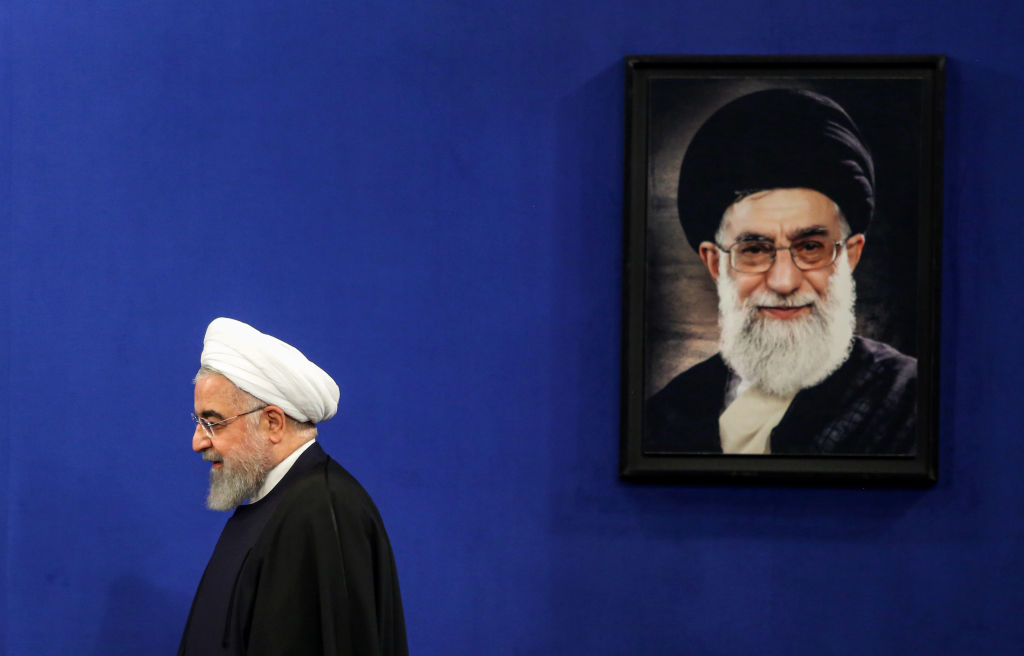Millions of Iranians have been severely affected by the coronavirus pandemic and an economy strained by sanctions, but the political elite in Tehran have other priorities.
The power base of Iran’s theocratic velayat-e faqih regime—a labyrinth of elected and unelected institutions directed from above by religious experts—is in the middle of a seismic shift. Once the process is complete in around the middle of next year, the country’s governance system will essentially be a totalitarian military dictatorship run by a powerful ideological elite, the Islamic Revolutionary Guards Corps.
Over the past couple of years, an alliance forged between the IRGC and Iran’s Supreme Leader Ali Khamenei has gradually assumed near total control of all branches of the regime.
The IRGC has always been a powerful political force in Iran. While most modern states have an army that is subordinate to the political class, the IRGC is a revolutionary army running a state. It is a huge enterprise—200,000 personnel, plus hundreds of thousands of volunteers in the Basij, a domestic paramilitary organisation in charge of suppressing internal dissent. The IRGC’s Quds Force trains and advises proxies that are engaged in terrorism and regime destablisation across the Middle East—such as Lebanon’s Hezbollah and Yemen’s Houthis—as part of its mission to ‘export the revolution’. These activities led the US to list the IRGC as a terrorist entity in 2019.
Financially, the IRGC is a mega-conglomerate that owns a variety of industries amounting to around half of Iran’s economy. This includes the most prestigious military projects, especially the flagship nuclear-weapon and ballistic-missile development programs. Much of the IRGC’s enormous budget is off the books, as money flows to it through funds directly under the control of Khamenei, free from any public scrutiny.
Read the article by Ran Porat in The Strategist.

